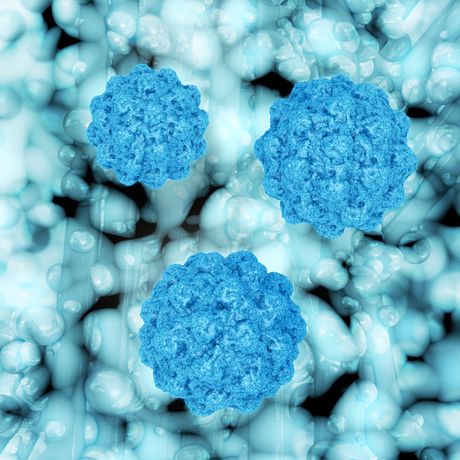Finally, a way to culture norovirus in the lab

Forty-eight years after noroviruses were first identified, researchers have found a way to grow them in the lab — opening a path for researchers to develop systems to prevent and treat norovirus infections.
Norovirus, also known as winter vomiting bug or the cruise ship virus, is the leading cause of illness and outbreaks from contaminated food. The virus is very tiny and very infective — as few as 18 virus particles can cause illness. Food can get contaminated with norovirus when infected people who have stool or vomit on their hands touch the food; when the food touches surfaces that have infectious stool or vomit on them; or when aerolised vomit from an infected person sprays through the air and lands on the food.
Foods can also be contaminated at source — for example, oysters grown in contaminated water or fruit and vegetables contaminated in the field.
Noroviruses are species specific — human noroviruses only infect and cause disease in humans, and mouse noroviruses only do so in mice. Human noroviruses do not grow in mice or other small animal models typically used for research.
You would think such an endemic virus would have been extensively studied but scientists have struggled to culture the viruses in the lab — until now.
Scientists at Baylor College of Medicine have, for the first time, succeeded at growing noroviruses in laboratory cultures of human intestinal epithelial cells. This work, published in Science, represents a major step forward in the study of human gastroenteritis viruses because it establishes a system in which a number of norovirus strains can be grown, which will allow researchers to explore and develop procedures to prevent and treat infection and to better understand norovirus biology.
“People have been trying to grow norovirus in the lab for a very long time. We tried for the last 20 years. Despite all the attempts and the success of growing other viruses, it remained a mystery why noroviruses were so hard to work with,” said senior author Dr Mary Estes, Cullen endowed professor of human and molecular virology and microbiology at Baylor and emeritus founding director of the Texas Medical Center Digestive Diseases Center.
“My idea was that we had not succeeded at growing noroviruses because we didn’t have the right cell type,” said Estes. “We first showed that in patients with chronic norovirus infections, the virus could be detected in intestinal cells called enterocytes, but normal human enterocyte cells rapidly died when put into culture. A breakthrough came when we learned that Dr Hans Clevers’ team in the Netherlands had developed a method to make a new type of human intestinal epithelial cell culture system including enterocytes. These novel, multicellular human cultures, called enteroids, are made from adult intestinal stem cells from patient tissues. We anticipated that putting the virus in these non-transformed human cell cultures would let the virus grow.”
It took Estes and colleagues about one year to get the human intestinal epithelial cultures growing well in the lab. Then, before they tested the cultures with noroviruses, they tested them with another human gastrointestinal virus, rotavirus.
“Rotavirus grew well in the human intestinal epithelial cell cultures,” said Estes. “Then, we tried the human norovirus and found that some strains would grow, but others wouldn’t. We suspected that still something was missing.”
The researchers tried to improve the growth of the viruses by adding to the cultures substances that are naturally present in the upper small intestine, the natural environment where the virus grows. Other intestinal viruses, such as rotavirus, use these substances to grow inside the body.
“The human body responds to food by secreting enzymes from the pancreas and bile from the liver into the small intestine. Pancreatic enzymes digest the large molecules and bile solubilises fats,” said Dr David Y Graham, professor of medicine and molecular virology and microbiology at Baylor and the Michael E. DeBakey Veterans Affairs Medical Center. “Viruses that cause gastroenteritis, such as rotavirus, utilise pancreatic enzymes to trigger their replication, but these enzymes had no effect on norovirus. We asked, if pancreatic enzymes were not important, was bile a key component allowing the virus to recognise where it was and replicate?”
“When we added bile to the cultures, norovirus strains that didn’t grow before now grew in large numbers!” said Estes.
“This new cultivation system will finally allow us to gain an insight into how this virus causes disease,” said co-first author Dr Sue Crawford, an assistant professor of molecular virology and microbiology at Baylor.
Beany flavour study to enhance the appeal of soy-based foods
A scientific study at the University of Missouri is exploring novel ways to improve the flavour...
FCR image bank provides precise food cue feedback
GMU's Food Cue Reactivity image bank update produces more accurate and consistent...
Aust and NZ baby food nutritional claims unfounded: study
New research has shown that baby foods often feature misleading claims aimed at convincing...








